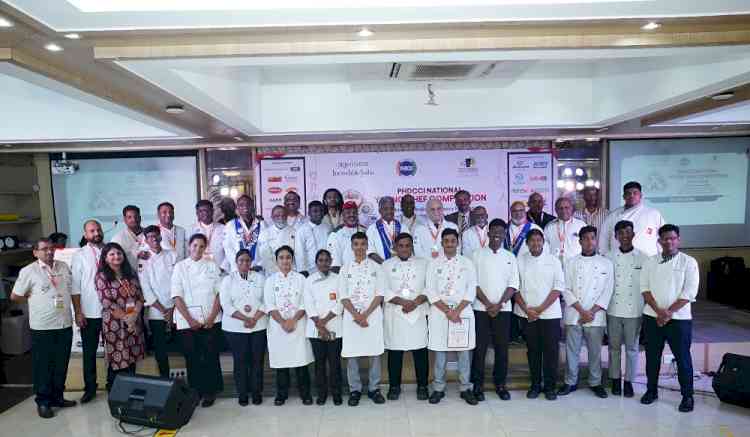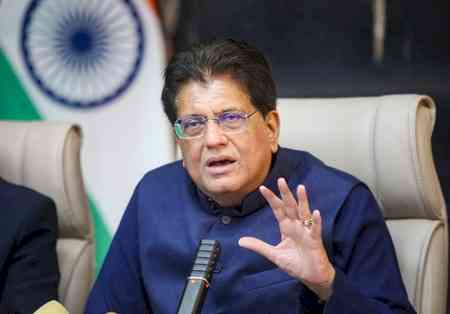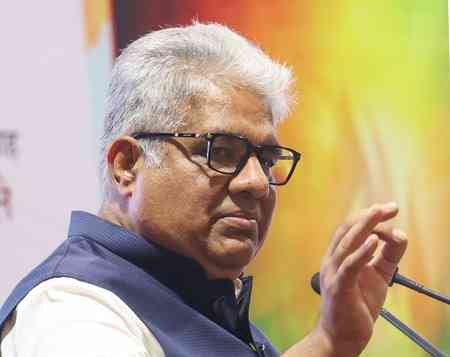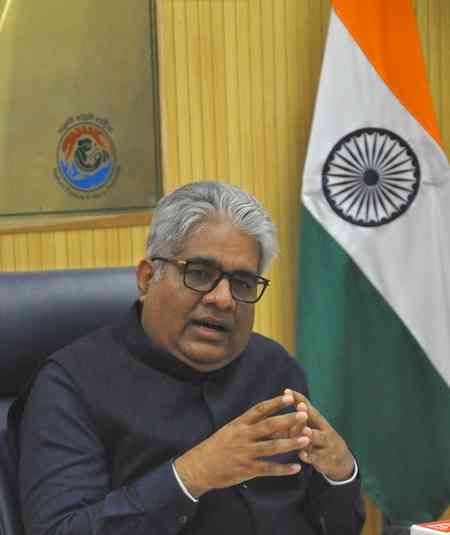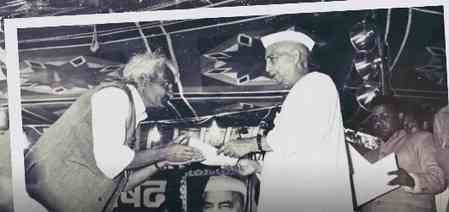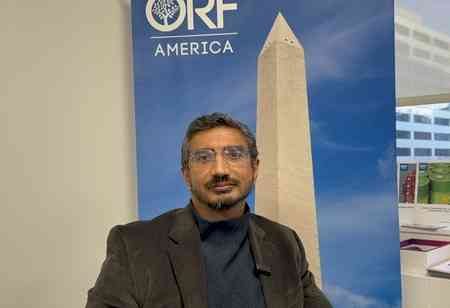WWEPC to celebrate its 58th Establishment Day
WWEPC – A Catalyst in Promoting Woollen Exports

New Delhi, October 5, 2022: Romesh Khajuria, Chairman, Wool & Woollens Export Promotion Council (Ministry of Textiles, Government of India) has said that the Council is commemorating its 58th Establishment Day on 6th October.
WWEPC was established by the Central Government in 1964 with an objective to support, protect, maintain, increase and promote the export of Wool & Woollen Products and Acrylic Knitwear. Since its establishment in 1964, WWEPC has played a dynamic role in promoting exports from India and maintaining warm relations by serving the interests of domestic and foreign business relations.
During its 58 years journey, WWEPC has rendered valuable services to the Indian Woollen Industry for enhancing export and strengthening production base through qualitative interventions, initiatives on export promotion and other activities. When world export of textile and apparel was governed by Multi Fibre Agreement (quota period), WWEPC was assigned work of quota allocation for acrylic knitwear and woollen fabrics. WWEPC successfully transformed itself as a facilitator for export growth.
The woollen textile and clothing industry is relatively small compared to the cotton and manmade fibre-based textiles and clothing industry, yet the woollen sector plays an important role by linking the rural economy with the manufacturing industry, represented by small, medium & large-scale units. The product portfolio is equally divergent from textile intermediaries to finished textiles, garments, knitwear, blankets, carpets, etc. with presence in technical textiles. This industry caters to civil and defence requirements for warmer clothing.
The industry has the potential to generate employment in far-flung and diverse regions and at present provides employment in the organised wool sector to about 12 lakhs persons, with an additional 20 lakhs persons associated in the sheep rearing and farming sector. Further, there are 3.2 lakh weavers in the carpet sector. Woollen Sector is also contributing to the growth of our nation by providing employment especially for rural women and earning foreign currency.
The production of wool in the country is not sufficient to meet the demand for the wool industry particularly of apparel sector and most of it is being imported from Australia, New Zealand, China and many other countries. The present requirement of different segments of Indian woollen industry is likely to grow further because of higher domestic as well as export need of woollen items. Demand for wool exceeds domestic production, since India produces a lot of value-added products that are exported. India imported raw wool worth Rs. 1660 Crores (1,07,839 Tonnes) during 2021-22.
The total production of raw wool in India were 40 to 48 Million kgs approximately during last decade. Out of total wool produced in India about 85% is carpet grade wool, 5% apparel grade and remaining 10% coarser grade wool for making rough blankets etc. A small quantity of speciality fibre is obtained from Pashmina goats and Angora rabbits.
The sector has the potential to generate more employment if the raw material i.e. wool, is available at their door step of manufacturers/weavers and moreover Indian wool if produced in good quality and quantity will help our manufacturers/weavers to procure the same easily and conveniently domestically as small manufacturers/weavers cannot afford to import raw wool.
Wool is 100% natural, sustainable, biodegradable and long-lasting fibre. A natural option for both sustainability and performance, wool is fast becoming the future for technical clothing. Today, wool & woollens manufacturing in India has made new inroads with ingenious styles, textures and colours. All wool; wool worsted and blended fabrics; ready to wear products like cardigans, pullovers, socks, gloves, mufflers, shawls, stoles; blankets, hand-woven textiles and carpets, made of high-quality yarn in Merino, Botany, Lamb Wool, Shetland, Angora and Mohair, constitute India's wide range of woollen products.
India exports multiple woollen products including wool top, yarn, fabric, blankets, garments, knitwear, sweaters, cardigans, pullovers, hosiery goods, socks, pashmina shawls, stoles, mufflers, clothing accessories, made-ups, carpets etc. India exported woollen products worth Rs.5300 Crores during 2021-22 (excluding woollen carpets) and registered growth of 30% over the last year. The woollen yarn and articles of wool apparel & clothing accessories (both knitted and woven) are among India's largest exported woollen products. India exports wool and woollen products to more than 150 countries around the world. The major importing countries are USA, UK, France, Germany, Italy, Spain, Belgium, Canada, UAE, Saudi Arabia, Indonesia, China, Australia, Japan, South Korea, Russia etc.
The Council is regularly taking up the issues being faced by the woollen industry with the Government for effectively accommodating them into the policy framework. The Council also provides a unique opportunity and platform for exporters of woollen products to build business contacts with overseas importers & buyers by organising participation in international trade fairs/exhibitions/Buyer Seller Meets in India and abroad. WWEPC is organising 3rd India Fashion Tex – A Reverse Buyer Seller Meet in New Delhi and Export Award Function to compliment the efforts of our member-exporters for their outstanding export performances during the years 2019-20, 2020-21 and 2021-22 during January 2023.The Council is also organising Capacity Building Programmes for manufacturers and new entrepreneurs in all woollen clusters like Jammu, Srinagar, Ladakh, Ludhiana, Amritsar, Panipat, Bikaner, Tirupur and many more clusters
As the Government has been encouraging the agriculture the same way the sheep farmers should be considered as agricultural and subsidies along with facilities should be provided to them. If we encourage our sheep farming sector, we can produce more wool in terms of quality and quantity which will reduce our import burden and save foreign currency which is equal to the foreign currency earned.
The Government has taken various steps for the development of woollen industry. In order to boost the export, several concessions have been given on import duties on raw wool, textile machinery, providing subsidy under Technology Upgradation Fund Scheme, Market Access Initiative Scheme, PLI Scheme etc. Measures like simplification of procedures attempted through fine tuning of exiting practices under various schemes for transparency, accountability, reducing transaction time and other steps definitely helped the industry to create a better enabling environment for enhancing our export potential.
He said, “We are highly grateful to Minister of Commerce & Industry and Textiles Piyush Goyal for signing FTA with Australia which enables Indian Importers to import raw wool at zero duty”, adding, “Australia is main market for import of raw wool with annual import of Raw Wool to the tune of Rs.900 Crores.”
The wool textile industry in India is poised to grow at a healthy rate. A higher rate of technology penetration into this industry, coupled with government incentives and other capacity-building initiatives will definitely give momentum to exports besides stimulating domestic consumption.
Concluding, he said, “WWEPC acknowledge the support of Ministry of Commerce & Industry and Ministry of Textiles, whose various Export Promotion Schemes have helped the exporting community to achieve the export target during 2021-22. WWEPC also appreciate the hard work of the export fraternity in achieving the ambitious export target of US$ 400 Billion during 2021-22, envisioned by Prime Minister Narendra Modi, the target set by Prime Minister acted as a guiding light for the export fraternity.”


 City Air News
City Air News 
